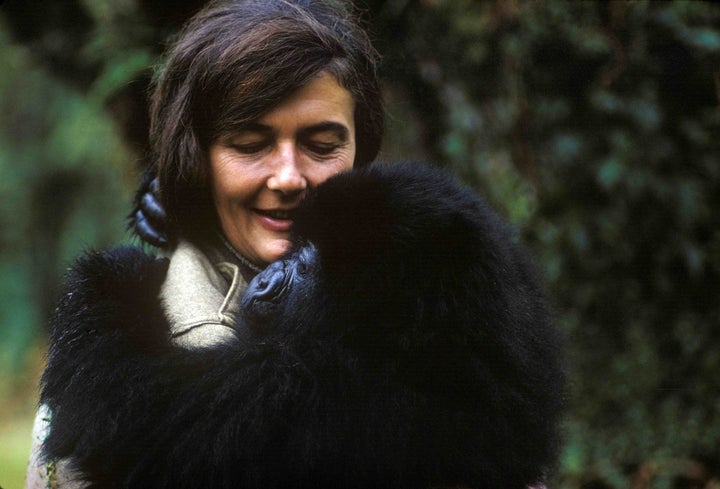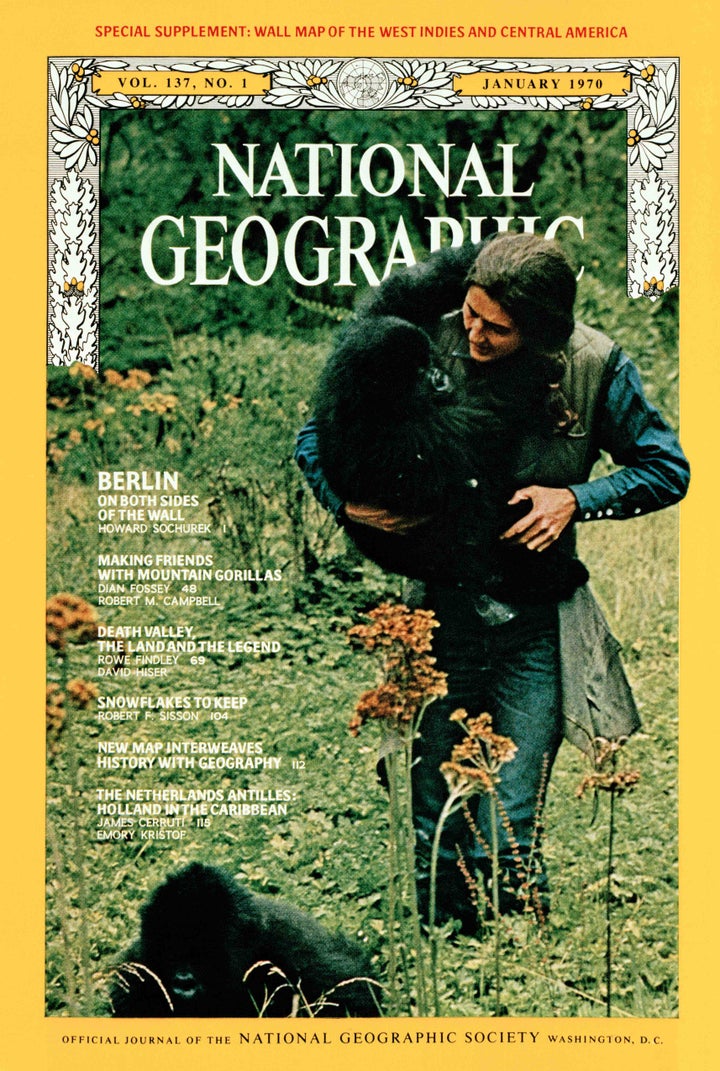
Secrets in the Mist offers an intimate account of the life and legacy of the iconic primatologist Dr Dian Fossey, 32 years after her vicious murder.
National Geographic’s Dian Fossey: Secrets in the Mist, beginning on Wednesday Dec. 6, at 9/8c, is a compelling story about an intrepid gorilla conservationist.
Under the watchful assistance of the late anthropologist Dr Louis Leakey and sponsorship by National Geographic, Dian Fossey (1932-85) set forth to explore and study the endangered mountain gorillas of Rwanda’s Volcanoes National Park.
This splendid 3-part series, executively produced by Academy Award-winning James Marsh and narrated by Emmy Award-winning actress Sigourney Weaver, is based upon Fossey’s own observations and writings. “Neither destiny nor fate took me to Africa. Nor was it romance. I had a deep wish to see and live with wild animals in a world that hadn’t yet completely been changed by humans,” wrote Fossey.
The series commences with unseen and rare footage on Sept. 24, 1967 of Fossey establishing the Karisoke Research Center, 10,000 feet above sea level in the rainforests of northwestern Rwanda.
Fossey was the first person to undertake a long-term gorilla study. She won the trust of these intelligent mammals by playing to their curiosity. Fossey developed a unique method of study using a submissive technique to habituate the gorillas. It enabled her, and eventually her students, to win the trust and acceptance of these endangered, sentient gorillas.
National Geographic photographer Bob Campbell recorded stunning footage of the first time a mountain silverback gorilla reached out to Fossey. No human had ever accomplished this remarkable feat of establishing a trusting bond with these kindred mammals. Campbell’s breathtaking pictures of Dian Fossey holding two orphans, Coco and Pucker, captured the world’s attention. It earned Fossey the moniker Gorilla Lady and brought her international recognition.

Coco and Pucker, the gorilla orphans, survived because they loved Dian Fossey as their mother.
Until Fossey began her work there was no basic information on the gorilla society including how long mothers suckled young. Fossey and her students collected crucial base-line data. They discovered that each gorilla has its own unique wrinkle pattern above its nose and finger prints.
Fossey soon encountered poachers ensnaring gorillas by their hands and feet – a slow and excruciating death. She undertook active conservation methods including using Halloween masks and what the locals described as black magic, to frighten and deter future assailants. Corrupt park authorities regularly turned a blind eye to poaching, which accelerated in the 1970s.
On Jan. 2, 1978 – 11 years after a young male gorilla named Digit befriended Fossey – he was found decapitated and handless. Digit’s head was considered a lucrative trophy on the Black Market and his hands were sold as ashtrays.
Fossey was enraged. Poaching gorillas was escalating and 40 percent of gorilla habitat – the ancient forests – was gone, logged.
Six months after the brutal murder of Digit, Group 4, the most studied of Fossey’s units, was attacked and many gorillas were beheaded. The remaining few split up, Group 4 disassembled.
At the Karisoke Research Center, the graveyard of gorillas was ever-increasing. It shattered Fossey’s spirits.
The gorillas were Fossey’s family. She did what courageous warriors do – devised a plan to protect the remaining endangered gorillas. Fossey assembled armed guards, secured the perimeter of Karisoke and prepared to take on the legions of poachers.
During the night of Dec. 27, 1985, Dian Fossey was violently hacked to death in her cabin at the research center. To this day, her murder is enshrouded in mystery. She died on the mountain protecting kindred beings – her beloved gorillas from poachers.
I thoroughly recommend this excellent and informative National Geographic miniseries.
Dr Dian Fossey is an animal kingdom superhero!
Dr Reese Halter’s upcoming book is “Save Nature Now.”
